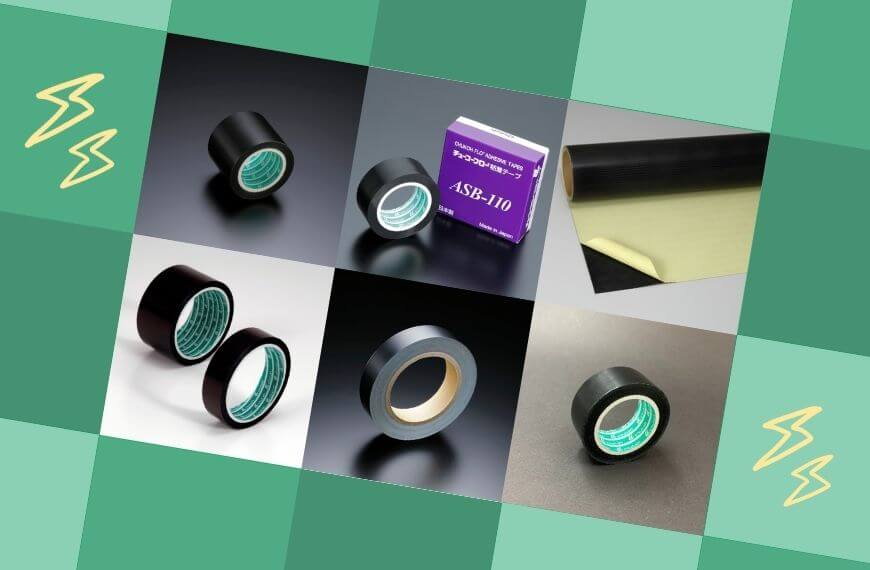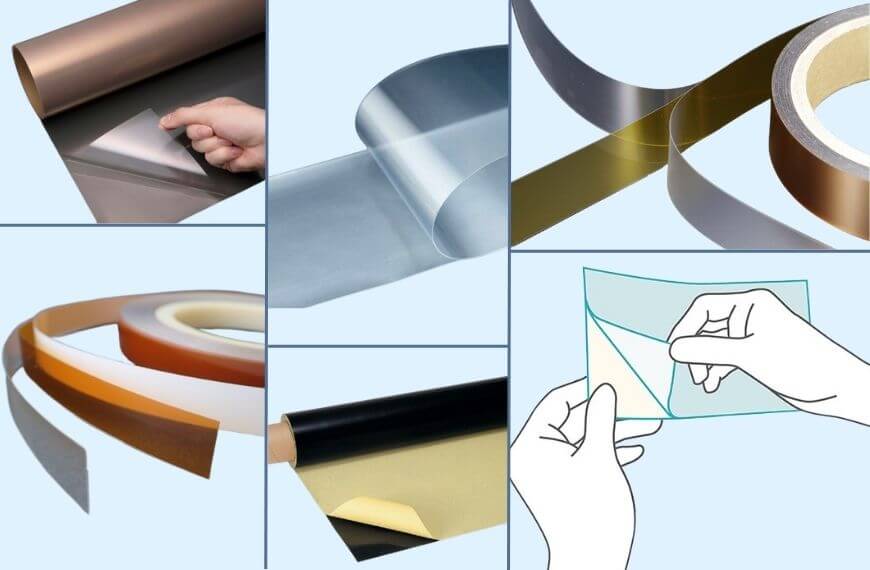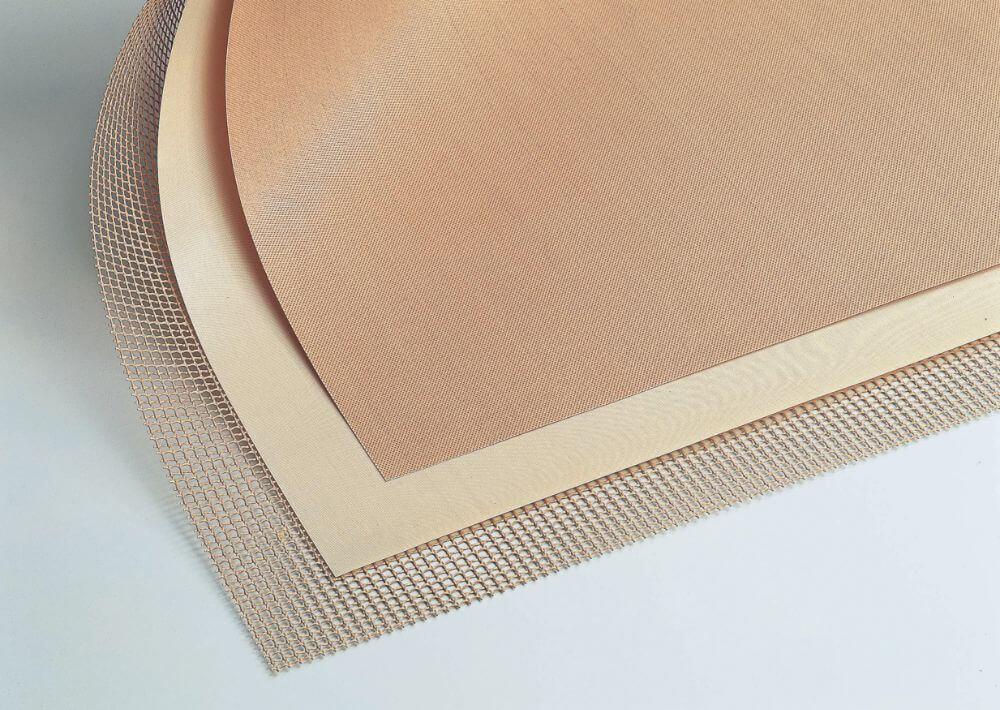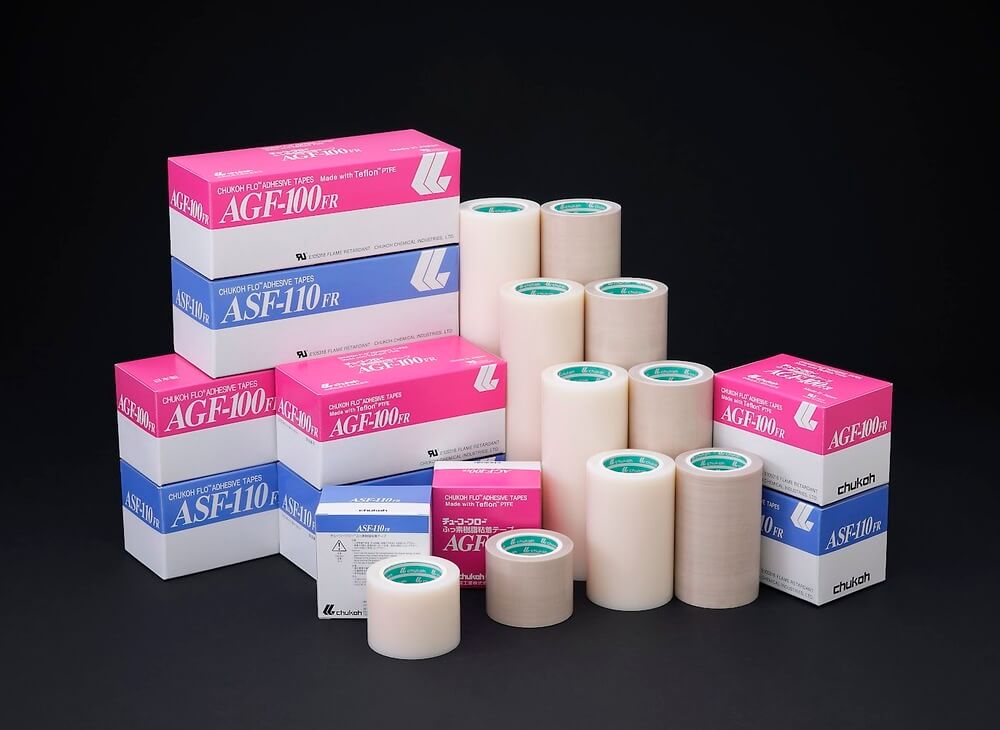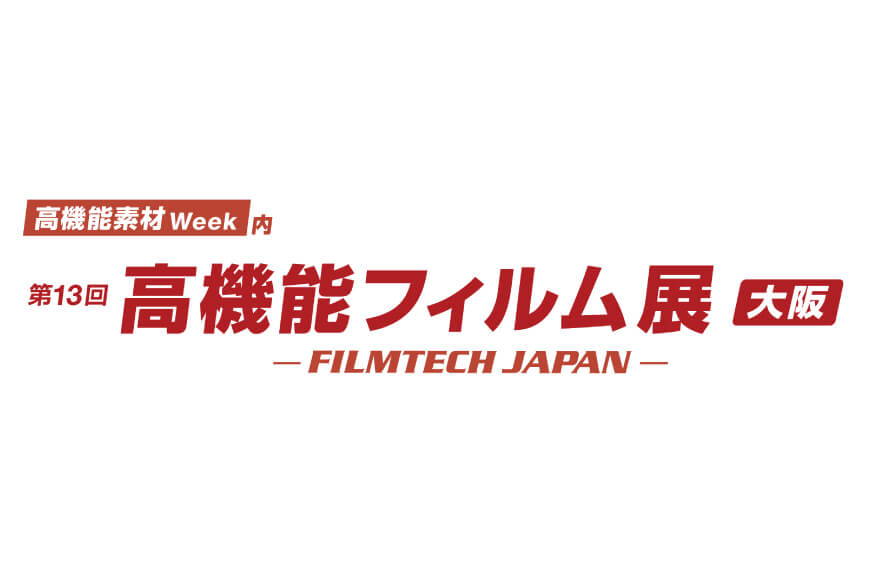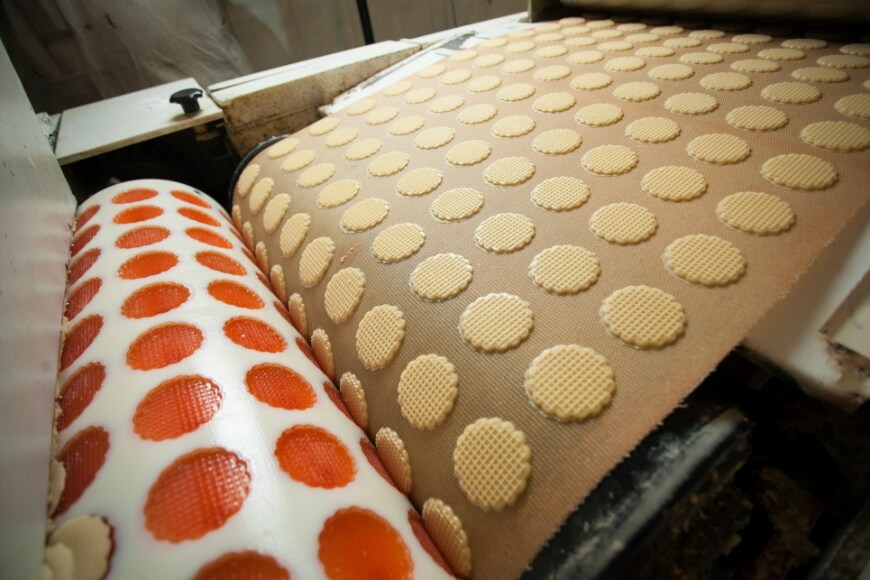
There are many different types of conveyor belts, and the characteristics required for each application are different. As time goes on, new materials and technologies appear, and conveyor belts also evolve. If you are currently looking for measures to improve work efficiency and productivity, Chukoh Chemical's "fluoroplastic belts," which we continue to research and develop, may be able to help you.
The mainstream materials for general conveyor belts are "metal," "rubber," and "resin."
Conveyor belts have a long history, dating back to ancient Egypt, when records show that linen canvas was used to transport bricks. Later, around the time of the Industrial Revolution in England in the mid-18th century, rubber conveyor belts with canvas began to be used. In Japan, rubber-coated cotton conveyor belts were developed in the 1920s, and since then, conveyor belts made from a variety of materials have come to be used. Today, conveyor belts are made mainly from three materials: metal, rubber, and resin, and are used for a variety of purposes.
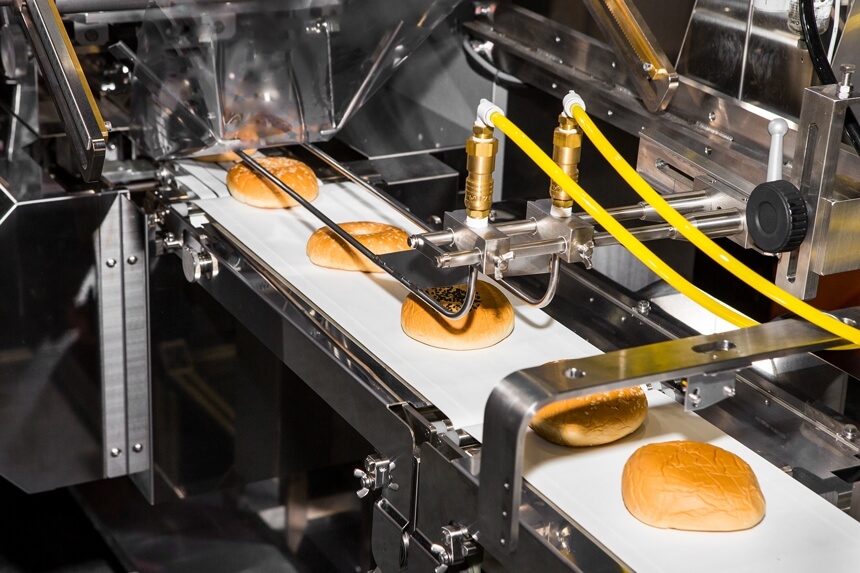
"Metal belts" take advantage of metal's properties such as electrical conductivity, washability, cleanability, and heat resistance, and are used for antistatic transport of semiconductors and electronic parts, as well as in production lines where food is directly placed on the belt. "Rubber belts," which are flexibility and shock-resistant, are widely used as general-purpose conveyor belts in factories, as well as for transporting soil and crushed stone in outdoor quarrying plants.
In addition, "resin belts," which are mainly made by coating the surface of polyester fibers with resin materials such as polyurethane, are easy to process, relatively thin, so they require less electricity during use, and are odorless, and have been used in a wide range of industries in recent years.
Another area where we are looking forward to future developments is" fluoroplastic belts." fluoroplastic have the properties of heat resistance, lowest friction, non-stick characteristics, chemical resistance, low friction, and Insulation, and are used in a variety of manufacturing processes for food, textiles, building materials, plastics, ceramics, and more.
Are you having any of these problems with the conveyor belts you are currently using?
Every day, Chukoh Kasei receives a variety of concerns from customers who use conveyor belts.
Here we will introduce some of the most common problems.

Problem 1: I want to transport high-temperature materials and products
We want to transport high-temperature materials and products such as bread, rice, nonwoven fabric manufacturing processes, and shrink-wrapped products.
Problem 2: I want to transport sticky, highly viscous products smoothly
Thick rubber, sticky chocolate, bread and hamburger dough, etc. tend to stick to the belt. To increase productivity, we want to transport these materials without them sticking.
Problem 3: I want a conveyor belt that won't deteriorate when exposed to ultraviolet rays or chemicals
Conveyor belts made of urethane or rubber deteriorate quickly due to ultraviolet rays.
We need a conveyor belt that will not deteriorate even when used in sterilization lines that irradiate UV rays, in the manufacture of thermosetting resins, or when using chemicals.
"fluoroplastic belt" has solved your problems!
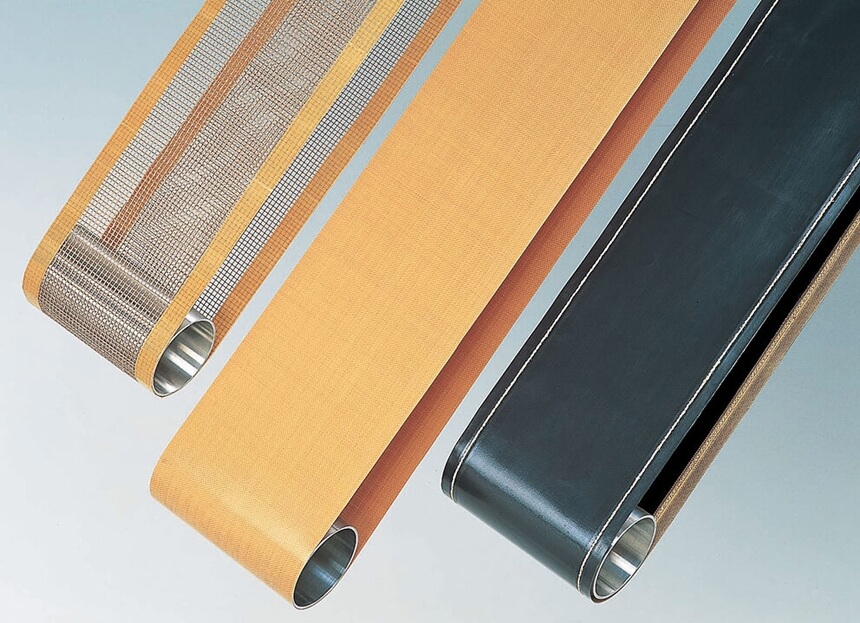
The reason why fluoroplastic belts can solve your problems lies in the excellent properties of fluoroplastic.
Problem 1: I want to transport high-temperature materials and products
The problem can be solved by using fluoroplastic properties: heat resistance
fluoroplastic has the highest heat resistance among all plastics. Chukoh Kasei's fluoroplastic belts can be used at high temperatures of up to +260℃, so they are used in manufacturing processes in a wide range of industries.
Problem 2: I want to transport sticky, sticky products smoothly
The problem can be solved by the properties of fluoroplastic: releasing ability
fluoroplastic has the property of not sticking to any substance. fluoroplastic belts smoothly transport sticky and sludgy materials, and even if they do stick, they can be easily peeled off, making cleaning easy.
Problem 3: I want a conveyor belt that won't deteriorate when exposed to ultraviolet rays or chemicals
The properties of fluoroplastic that can solve the problem: Weatherability and chemical resistance
fluoroplastic has the characteristic of being almost unaffected by ultraviolet rays, moisture, etc. It is also unaffected by most chemicals and solvents. fluoroplastic belts are used in environments where general conveyor belts cannot withstand.
"fluoroplastic belts" made from fluoroplastic, which has unparalleled properties, are widely used in a variety of industries, from food to packaging, building materials, and chemicals. We will briefly introduce some representative examples of how the properties of fluororesin are utilized in each industry.
 Food manufacturing industry
Food manufacturing industry
Smooth transportation of hot, freshly cooked rice
Freshly cooked rice is hot and sticky due to the amount of moisture contained. In order to transport this hot rice while loosening it to the right degree, a "fluoroplastic belt" is ideal. Its high heat resistance and releasing ability allow it to be transported smoothly to the next process.
 Packaging and packaging industry
Packaging and packaging industry
Transporting high-temperature films without them sticking
In the bag making industry, where films are glued together to make bags, "fluoroplastic belts" are built into bag making machines. The temperature at which film melts is 100°C or higher, so to prevent the film from sticking to the seal bar and to ensure smooth operation, releasing ability and heat resistance are required. "fluoroplastic belts" have both of these properties.
 Building Materials Industry
Building Materials Industry
Withstands high temperatures during pressing in carpet tile manufacturing and prevents rubber from becoming sticky
Carpet tiles, which are essential interior materials for buildings, are made by laminating the surface cloth with the backing PVC resin using a press. Here too, "fluoroplastic belts" are used because PVC resin needs to have releasing ability that prevent it from becoming sticky and high heat resistance to withstand the temperatures during pressing.
 Chemical Industry
Chemical Industry
Resistant to ultraviolet rays, chemicals and heat, and has excellent releasing ability, making it indispensable for the production of chemical materials!
"fluoroplastic" does not deteriorate even when exposed to UV rays for long periods of time (Weatherability) and can withstand most chemicals (chemical resistance), so it is also used as a conveyor belt in chemical material manufacturing sites. In addition, in the manufacturing processes of various materials such as rubber, resin, and adhesives, other properties such as heat resistance and releasing ability are also required at the same time. For this reason, "fluoroplastic belts" that combine all of these properties are used.
In modern society, conveyor belts are the "hidden heroes" that underpin mass production and mass consumption. fluoroplastic, have high performance and improve work efficiency and productivity, which in turn enriches our lives.
If you have any concerns about the conveyor belt you are currently using, please feel free to contact us.
Contact for inquiries regarding belt purchases, on-site installation, etc.
Chukoh Belt Co., Ltd.
![]() 0120-117-388 (Toll free)
0120-117-388 (Toll free)
Click here for the website
https://www.chukoh-belt.co.jp/



























